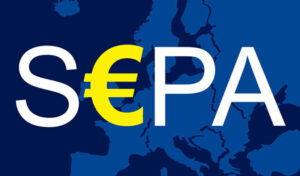
On October 6, 2025, the SEPA (Single Euro Payments Area) payment system officially began operating in Montenegro, allowing transfers in euros to be made at uniform European rates and with minimal fees.
Ukraine is already actively preparing to join SEPA (Single Euro Payments Area). At the moment, the country is not yet a full member of SEPA, but significant legislative and technical preparations are already underway. Below is what is known today and what the prospects may be.
In June 2025, Ukraine officially announced its intention to join SEPA. At that time, it was announced that the relevant plans and draft laws had been submitted to the Verkhovna Rada. Draft law No. 13233 “On Amendments to the Legislative Acts of Ukraine to Ensure Compliance with European Rules and EPC (European Payments Council) Criteria for Joining SEPA” was submitted. In April 2025, the Cabinet of Ministers approved a package of draft laws aimed at harmonizing Ukrainian legislation with EU requirements in the field of anti-money laundering, ensuring transparency and security of payments — an important step towards officially applying for SEPA.
The European Business Association (EBA Ukraine) publicly supports the bill on Ukraine’s accession to SEPA, but requests revisions to a number of provisions relating to financial monitoring, reporting regulations, and data protection.
The National Bank of Ukraine already has a new generation of payment infrastructure (SEP system, ISO 20022 standard) with 24/7 support for SCT (Credit Transfer) schemes, which is considered part of the preparation for SEPA. There are plans to introduce instant payments in euros.
According to experts, market participants (citizens and businesses) will be able to save €70–100 million annually by reducing fees for euro transfers. For businesses, this means lower costs for cross-border payments, simplified financial flows, and fewer intermediaries. For citizens, it means faster payments in euros within SEPA, more transparent conditions, and, possibly, lower transaction fees.
Key current challenges:
SEPA (Single Euro Payments Area) is a single area for cashless payments in euros, including the EU, EEA, Switzerland, the UK, Andorra, Vatican City, San Marino, and now Serbia and Montenegro.
The main goal of SEPA is to simplify and reduce the cost of euro transfers by ensuring the same rules and terms for all participants.